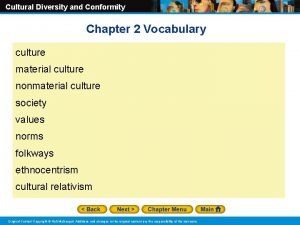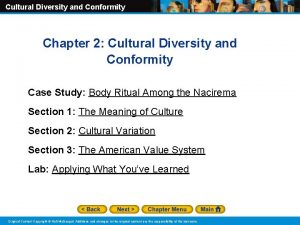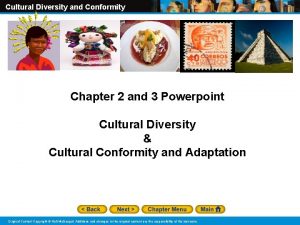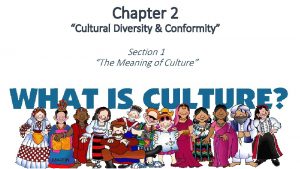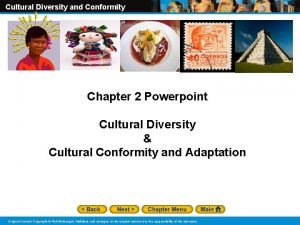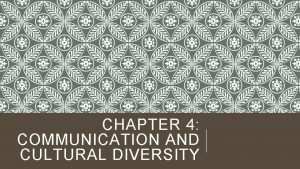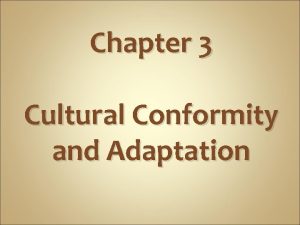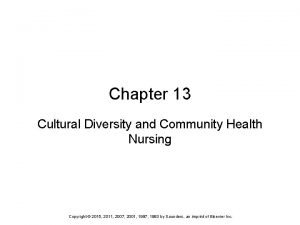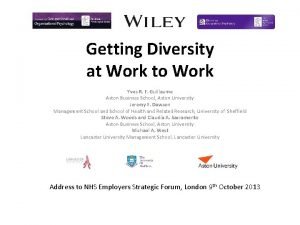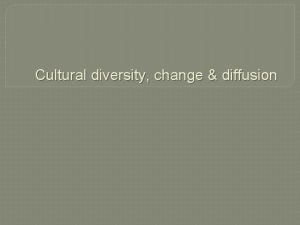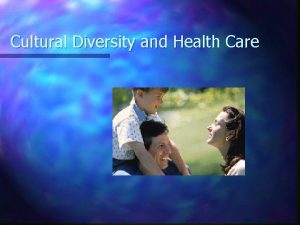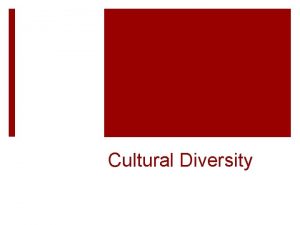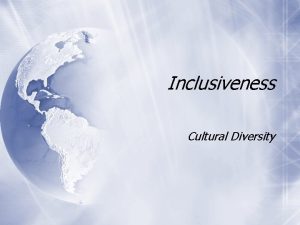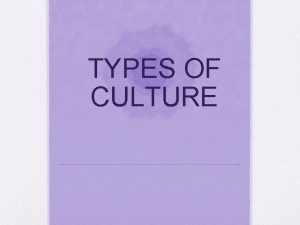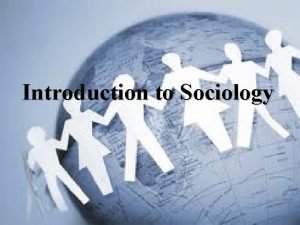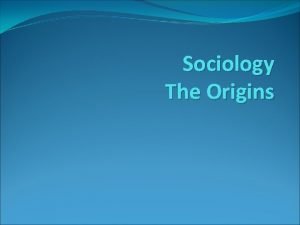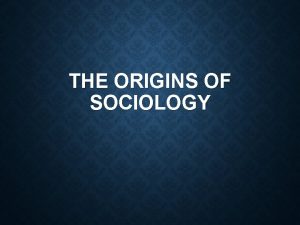Sociology Chapter 3 Section 5 Cultural Diversity and



















- Slides: 19

Sociology Chapter 3 Section 5: Cultural Diversity and Similarity

Cultural Change • All cultures experience change. • Norms, values, and beliefs are relatively stable, but they do change over time.

Why does culture change? • 1. Discovery – the process of finding something that already exists. • Generally unrecognized athletic abilities of females.

• 2. Invention – creation of something new. • Steam engines to cellular phones.

• 3. Diffusion – borrowing of aspects of culture from other cultures. • Food, Christmas trees, and piñatas. • Adoption of democracy and capitalism after WWII.

Cultural Diversity • Social Categories – groups that share a social characteristic such as age, gender, or religion. • Also includes behaviors – devout Catholics are expected to attend Mass regularly.

What are subcultures and countercultures? • Despite sharing in the broader culture, these groups have some ways of thinking, feeling, and behaving that set them apart. • Subcultures- part of the dominant culture but differs from it in some important respects – San Francisco’s Chinatown.

• Counterculture – subculture deliberately and consciously opposed to certain central beliefs or attitudes of the dominant culture. • Example: goth and punk scenes

Ethnocentrism • Once people learn their culture, they tend to become strongly committed to it. • Ethnocentrism – judging others in terms of one’s own cultural standards.

What are some examples of ethnocentrism? • The Olympic Games • Ranking is frequently taken as a reflection of the country’s worth and status on the world stage.

• Boston is said to be the hub of the universe. • Texans often claim to have the biggest and best of everything. • New Yorkers bemoan (express sorrow) the lack of culture in Los Angeles.

Does ethnocentrism help or hurt society? • Ethnocentrism has two faces • It offers both advantages and disadvantages. • People feel good about themselves and about others in their group when they believe that what they are doing is right and superior to what other groups do.

• Societies whose members are firmly convinced of their superiority tend not to create anything new. • The ancient Chinese built a wall to keep both invaders and new ideas out.

• The civil rights movement was born to combat racial ethnocentrism.

• Hitler’s Final Solution was ethnocentrism at its worst.

How are cultural universals expressed? • Cultural universals- general cultural traits that exist in all cultures, are not always carried out in the same way. • Cultures have developed different ways to express universals.

• Cultural particulars- ways in which a culture expresses universal traits. • Example: Caring for children: women have traditionally worked within the home caring for children. • Among the Manus of New Guinea, the man is completely in charge of child rearing. • Navajo and Iroquois Native Americans share equally in domestic and economic tasks.

Why do cultural universals exist? • Biological similarities • There must be some type of care, meal preparation, medical treatment, funeral rites, and inheritance to rules. • Environmental factors – constructing a shelter. • Armies were formed to settle disputes over boundaries and important waterways.

• Cultural universals exist because societies face many of the same social problems. • If society is to survive, new members must be taught the culture.
 Cultural diversity and conformity
Cultural diversity and conformity Cultural diversity and conformity section 3
Cultural diversity and conformity section 3 Cultural diversity and conformity section 3
Cultural diversity and conformity section 3 Cultural diversity and conformity section 2
Cultural diversity and conformity section 2 Cultural diversity and conformity section 1
Cultural diversity and conformity section 1 Cultural diversity and conformity section 1
Cultural diversity and conformity section 1 Chapter 4 communication and cultural diversity
Chapter 4 communication and cultural diversity Cultural diversity and conformity chapter test form a
Cultural diversity and conformity chapter test form a Chapter 13 cultural diversity and community health nursing
Chapter 13 cultural diversity and community health nursing Cultural diversity 3939 answers
Cultural diversity 3939 answers Chapter 9 cultural competence
Chapter 9 cultural competence 2009 delmar cengage learning
2009 delmar cengage learning Sociology chapter 1 section 2
Sociology chapter 1 section 2 Why is genetic diversity important
Why is genetic diversity important Genetic diversity vs species diversity
Genetic diversity vs species diversity Cultural diversity pros and cons
Cultural diversity pros and cons Positive and negative effects of cultural diversity
Positive and negative effects of cultural diversity Chapter 30 section 2 diversity of mammals
Chapter 30 section 2 diversity of mammals Chapter 30 section 1 mammalian characteristics answer key
Chapter 30 section 1 mammalian characteristics answer key Chapter 26 section 2 arthropod diversity
Chapter 26 section 2 arthropod diversity
